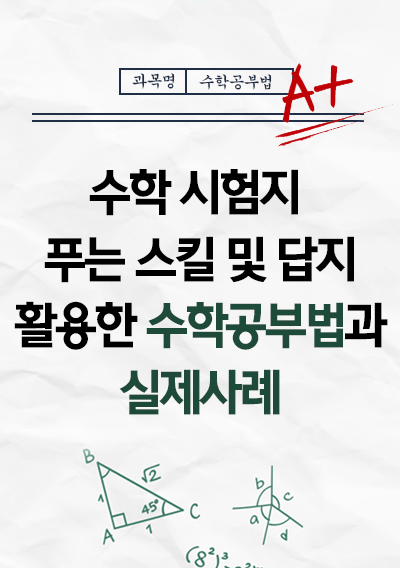* 본 문서는 배포용으로 복사 및 편집이 불가합니다.
서지정보
ㆍ발행기관 : 한국청동기학회
ㆍ수록지정보 : 韓國靑銅器學報 / 17권
ㆍ저자명 : 이석범
ㆍ저자명 : 이석범
목차
Ⅰ.머리말Ⅱ. 점토대토기 단계의 마제석기 검토
1. 석검(검파두식)
2. 석촉
3. 석부
1) 합인석부
2) 주상편인석부
3) 유구석부
4) 편평편인석부
4. 석착
5. 석도
6. 석겸
Ⅲ. 마제석기의 쇠퇴양상
Ⅳ. 맺음말
참고문헌
한국어 초록
청동기시대의 생업도구인 마제석기는 요령지역의 점토대토기 문화가 유입됨에 따라 점차 쇠퇴하게 된 다. 점토대토기 문화의 파급경로와 유입시기에 대해서는 여러 이견이 있지만, 이로 인해 나타나는 한국식 동검문화의 성립, 원형점토대토기의 사용, 지석묘의 소멸과 목관묘의 등장, 마제석기의 쇠퇴 등 문화적 변 화는 부인할 수 없다. 특히, 금속제 도구의 등장은 획기적인 변화라 할 수 있다. 마제석기 소멸의 직접적 인 요인은 삼각형점토대 문화와 관련된 전국계 철기문화이다. 본고는 철기문화의 출현이 명확한 영남지역을 중심으로 점토대옹의 발생순서에 따라 원형점토대토기 단 계(Ⅰ기), 원형점토대토기와 삼각형점토대토기가 공반되는 단계(Ⅱ기), 원형점토대토기가 소멸되고 삼각형 점토대토기만 보이는 단계(Ⅲ기), 삼각형점토대토기와 와질토기가 공반되는 단계(Ⅳ기)로 설정하고, 마제 석기를 대체하는 금속기는 기왕의 연구성과를 통하여 석검→세형동검·철검, 석촉→철촉, 석부→철부, 석착 →철착·철사, 석겸·반월형석도→철겸으로 파악하였다. Ⅰ기는 B.C. 4C 말∼B.C. 3C 후엽으로 유(무)경식석검, 평기식무경촉, 합인석부, 편평편인석부, 주상편 인석부, 주형석도, 석겸 등 다양한 석기가 공존하며 세형동검의 등장으로 석검은 쇠퇴기에 접어든다. Ⅱ기 는 B.C. 2C 전엽∼B.C. 2C 중엽까지로 전국계 철기가 유입되는 단계로서 Ⅰ기에 비해 마제석기의 수량이 급감한다. Ⅲ기는 B.C. 2C 후엽∼B.C. 1C 전엽까지로 주상편인석부·유구석부→판상·주조철부, 석착→ 철착·철사, 석도·석겸→철겸으로 대체된다. Ⅳ기는 B.C. 1C 중엽∼B.C. 1C 후엽까지로 와질토기가 등 장하는 시기로서 석촉→철촉, 합인석부·편평편인석부→판상·단조철부로 바뀐다. 늦어도 기원 전후를 기 점으로 지석, 연석 등을 제외한 대부분 기종의 석기가 철기로 대체된다.영어 초록
Polished stone tools, which were the devices essential to livelihood during the Bronze Age, gradually declined with the introduction of culture of pottery with clay stripes from the Liaoning area. There are many different opinions about the spread path and introduction time of the culture, but there is no denying that the culture brought about cultural changes in the Korean Peninsula including the creation of Korean-style bronze dagger culture, use of round pottery with clay stripes, disappearance of dolmens and appearance of wooden coffin tombs, and deterioration of polished stone tools. The advent of metal tools was, in particular, a ground-breaking change. The direct cause of demise of polished stone tools was the ironware culture from the Warring States period related to the triangular clay stripes culture. With a focus on the Yeongnam region where the appearance of ironware culture was apparent, this study divided the period into four stages according to the order of pottery with clay stripes including the Stage I of round pottery with clay stripes, Stage II with the coexistence of round pottery with clay stripes and triangular pottery with clay stripes, Stage III only with triangular pottery with clay stripes with no round pottery with clay stripes, and Stage IV with the coexistence of triangular pottery with clay stripes and grey pottery. Based on the previous studies, the investigator found polished stone tools were replaced by such metal tools as follows: stone daggers → slender bronze daggers and iron swords, stone arrowheads → iron arrowheads, stone axes → iron axes, stone chisels → iron chisels and wires, and stone sickles and semilunar stone blades → iron sickles. Stage I falls in the period between the end of B.C. 4C and the latter half of B.C. 3C with the coexistence of various stone tools including Yu(Mu) Gyeongshik stone daggers, Pyeonggishik Mugyeongchok, Hapin stone axes, Pyeonpyeong Pyeonin stone axes, Jusang Pyeonin stone axes, Juhyeong stone daggers, and stone sickles. The appearance of slender bronze daggers drove stone daggers toward their decline. Stage II falls in the period between the former half of B.C. 2C and the middle B.C. 2C, being characterized by the introduction of ironware from the Warring States period. Compared with Stage I, Stage II witnessed the rapid reduction of polished stone tools. Stage III falls in the period between the latter half of B.C. 2C and the former half of B.C. 1C with Jusang Pyeonin and Yugu stone axes, stone chisels, and stone daggers and sickles being replaced with Pansang and Jujo iron axes, iron chisels and wires, and iron sickles, respectively. Stage IV falls in the period between the middle B.C. 1C and the latter half of B.C. 1C with the appearance of grey pottery. Stone arrowheads and Hapin and Pyeonpyeong Pyeonin stone axes were replaced with iron arrowheads and Pansang and Danjo stone axes, respectively. Most types of stone tools except for memorial stones and inkstone were replaced with their iron counterparts at the latest the birth of Jesus Christ.참고 자료
없음태그
"韓國靑銅器學報"의 다른 논문
 전남 동남부지역 지석묘사회 변천과정32페이지
전남 동남부지역 지석묘사회 변천과정32페이지 형산강유역 청동기시대 주거지를 통해 본 문화변동양상38페이지
형산강유역 청동기시대 주거지를 통해 본 문화변동양상38페이지 남한 출토 유절식(有節式) 석검에 대한 연구26페이지
남한 출토 유절식(有節式) 석검에 대한 연구26페이지 남한지역 미사리유형 석기 양상 연구30페이지
남한지역 미사리유형 석기 양상 연구30페이지


























